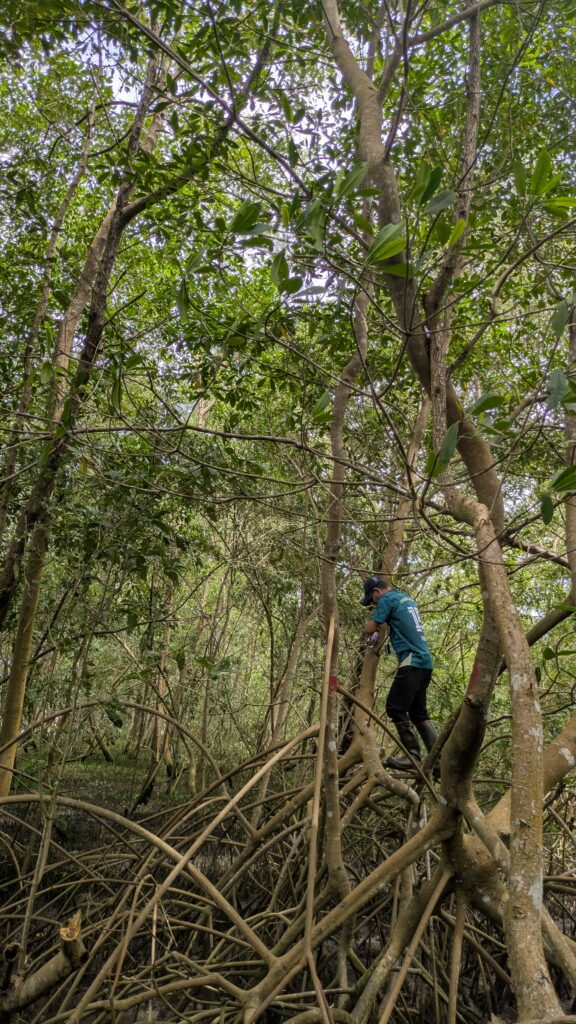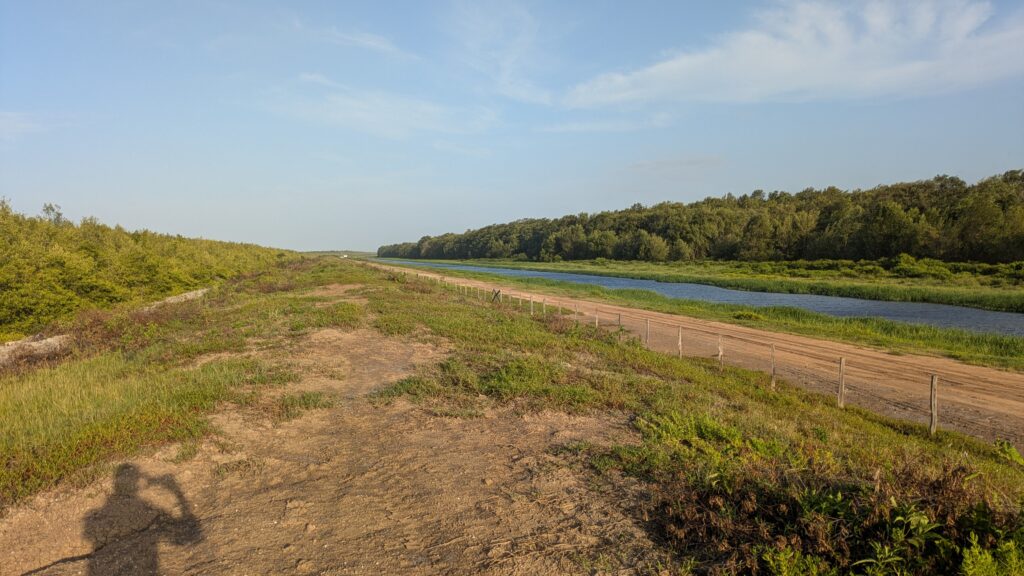The Role of Mangroves
Tropical mangrove forests are a natural defence to the impacts of rising seas and storms. These unique tropical ecosystems have the ability to trap sediment within complex root systems, reducing wave action, decreasing erosion, and building earthen buffers between the sea and interior land.
Furthermore, mangrove forests provide many ecosystem services that support the fishing, agriculture, forestry, and tourism industries. However, mangroves have been declining globally due to environmental, climatic, and human pressures, posing critical challenges to communities who live in and depend on these valuable ecosystems.
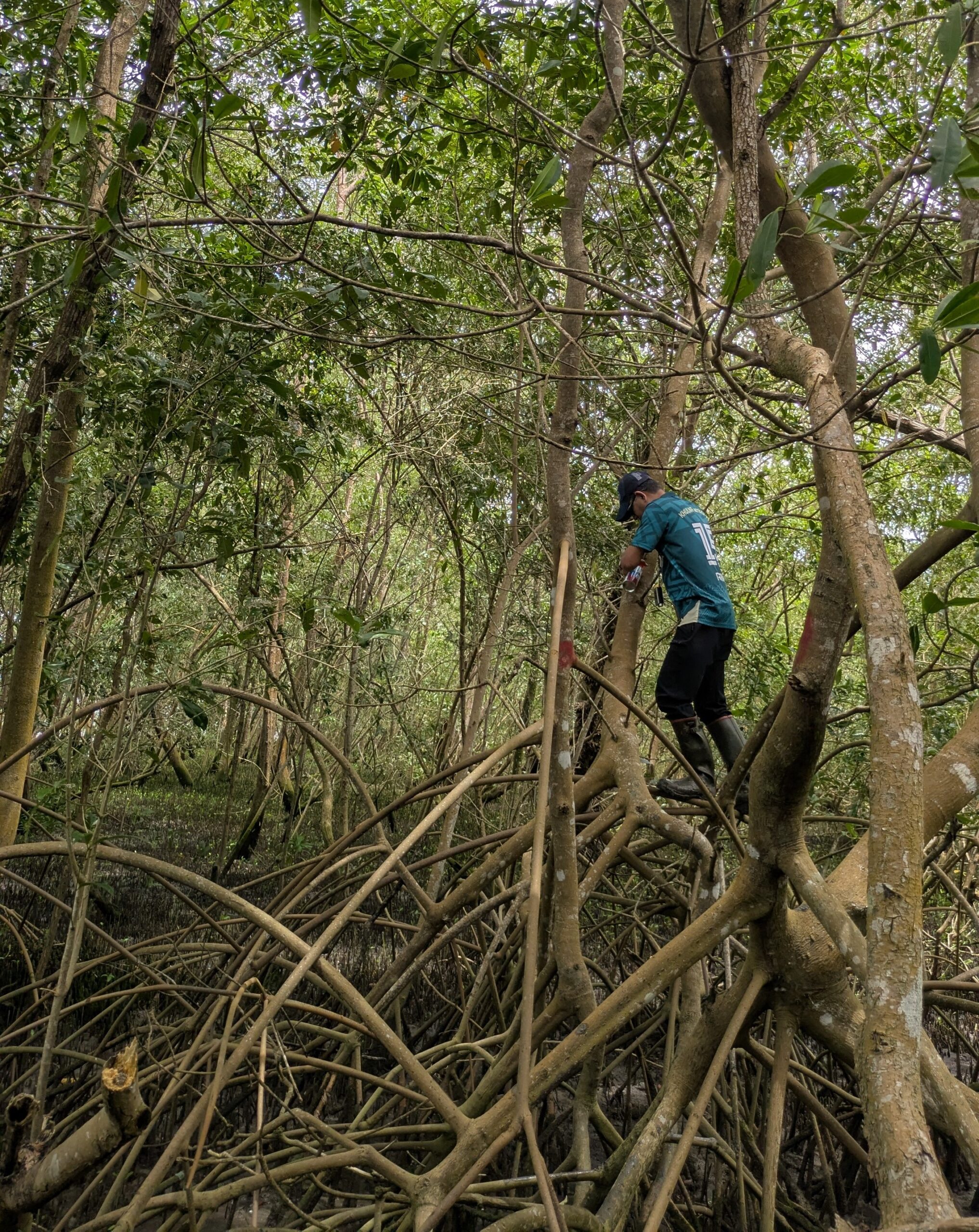
Suriname and Guyana’s mangrove ecosystems have historically helped protect coastal communities from flooding while supporting a wealth of ecosystem services to society. Today, both countries are among the most vulnerable to the impacts of sea-level rise and severe storms, with over 85% of their population living in the low-lying coastal areas.
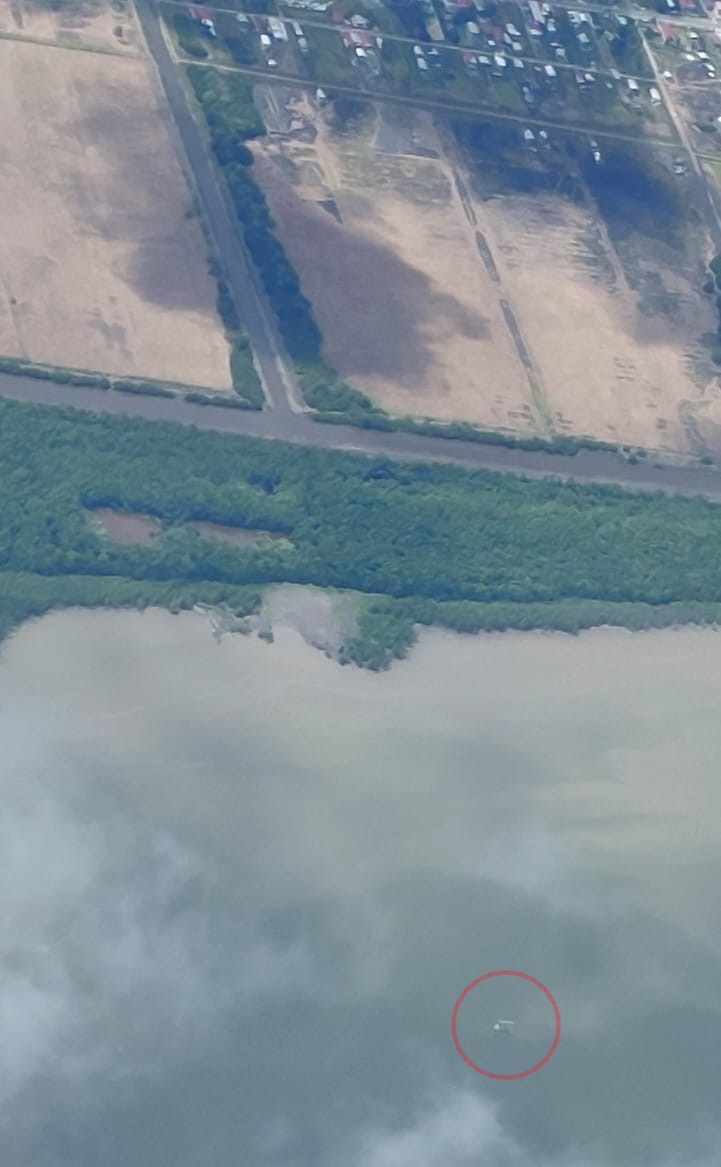
Fragmentation, erosion and man-made destruction of the mangrove forests along the coastal buffer zone have led to flooding and breaking of natural barriers that heavily jeopardize sustainable development both along the seafront itself but also in the capital cities of Paramaribo and Georgetown and agricultural production situated on the low-lying coastal plain.
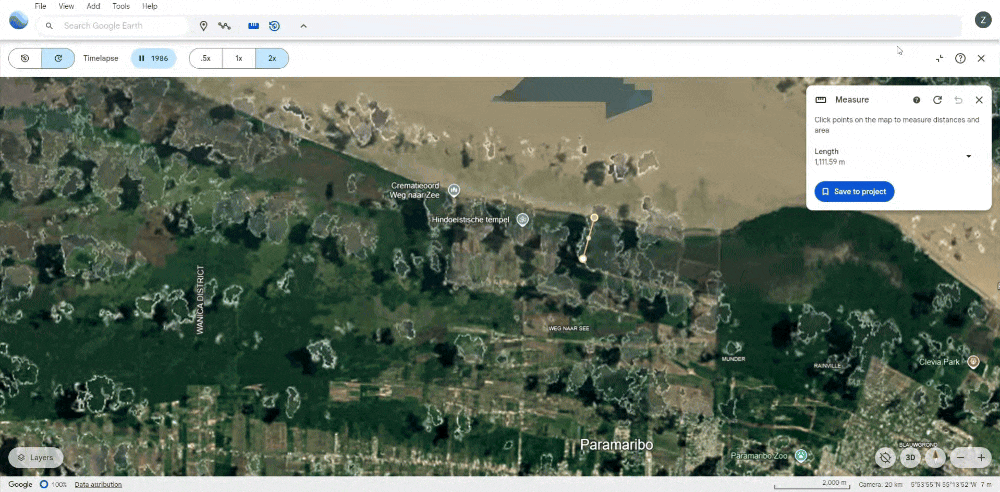
In Weg naar Zee, just north of Paramaribo, Suriname, 2-3 km of the coastline has eroded since 2000. This area is particularly susceptible to erosion due to lack of protection by mangroves.
This image shows a timelapse of Weg naar Zee region from 1986 – 2022. The yellow line perpendicular to the coast measures over a kilometre of coastal erosion.





